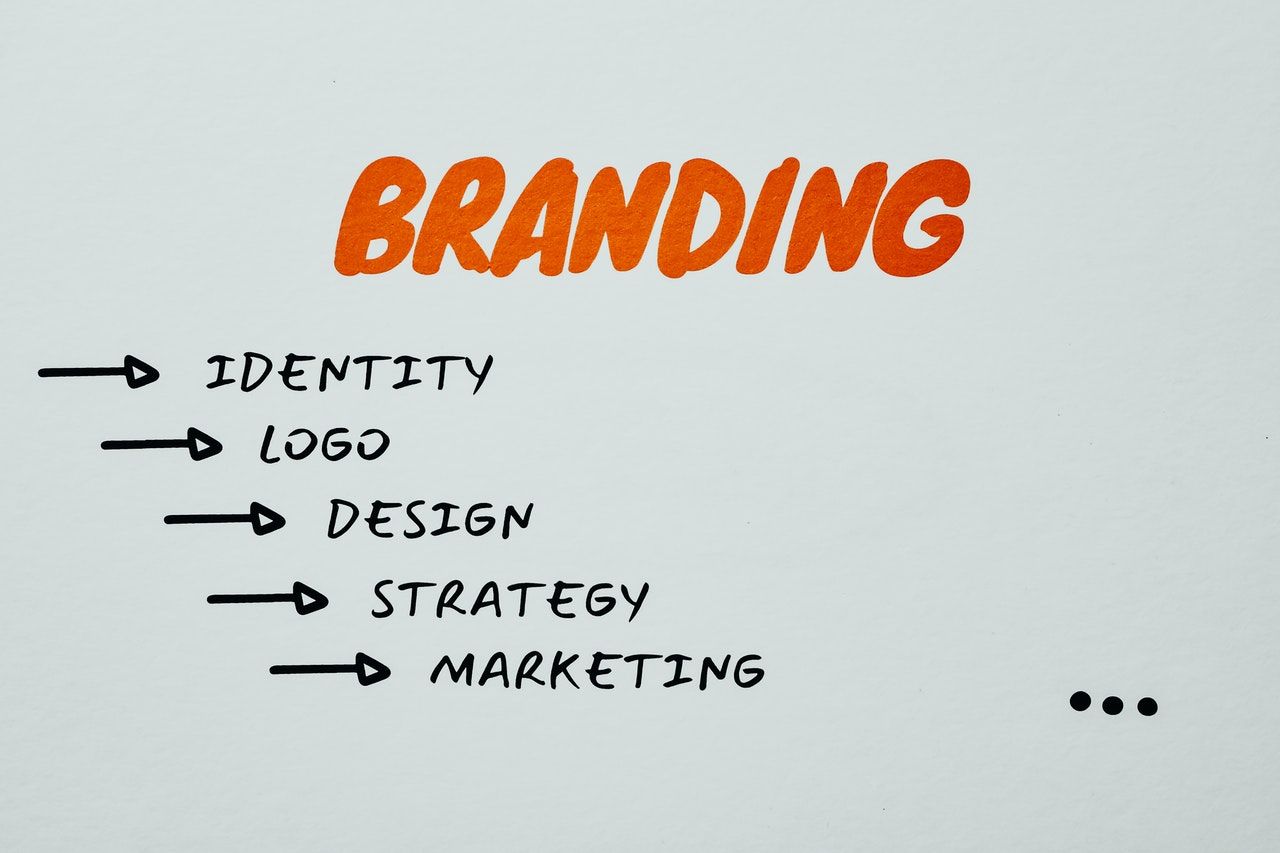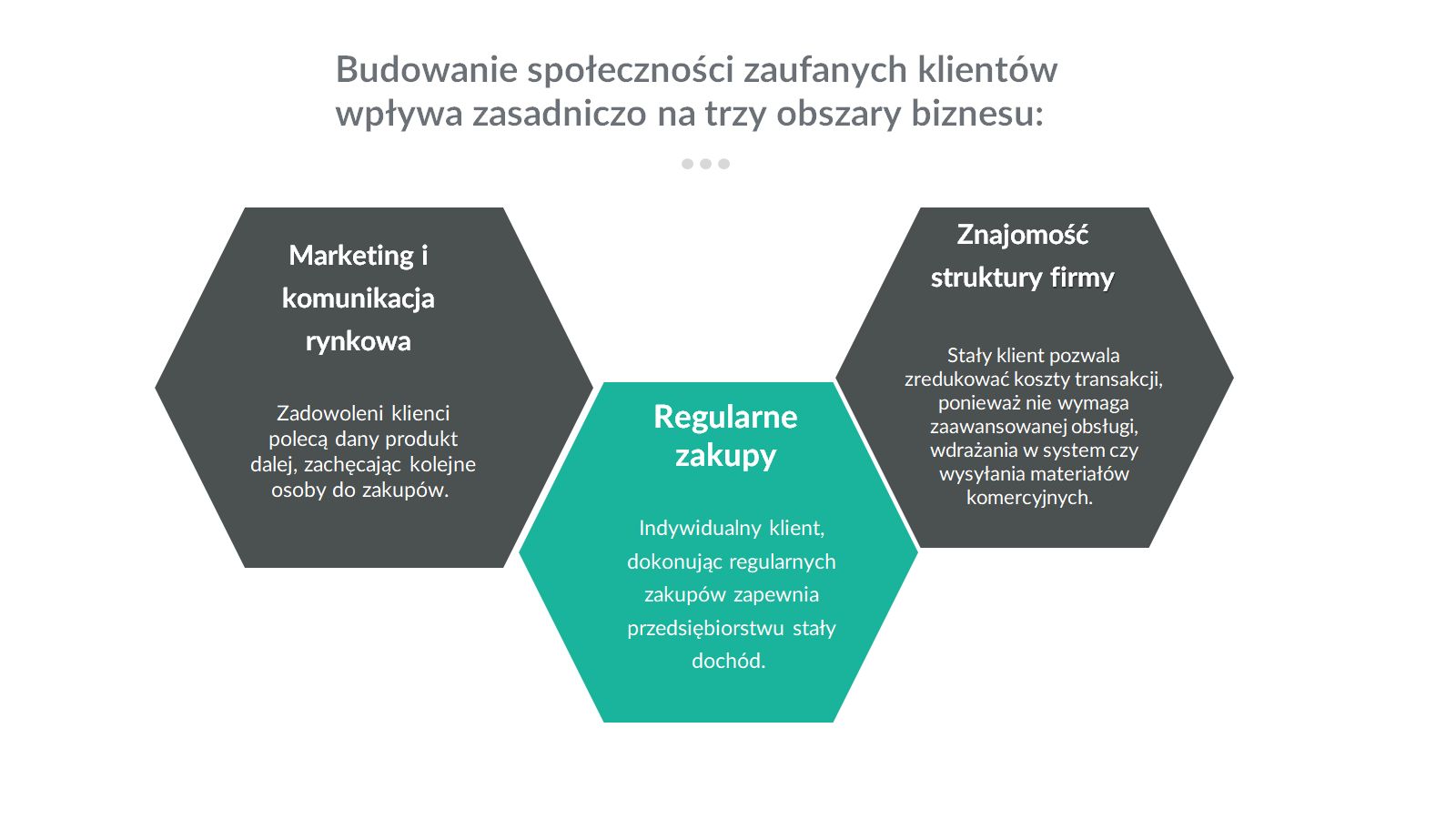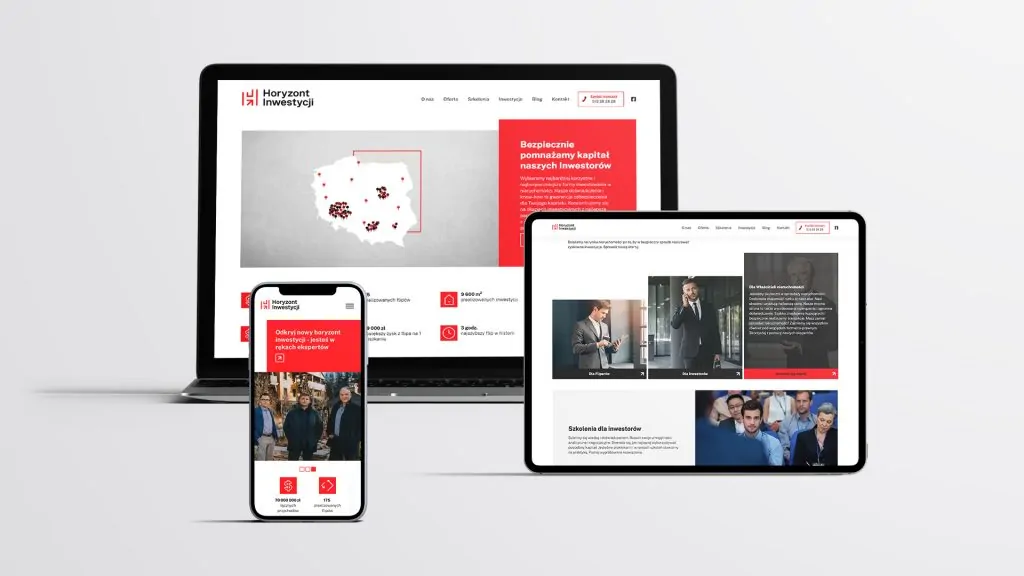Positive brand identity is key. Unique brand identity and brand image are quite often confused terms. It is therefore worth being aware that identity is not synonymous with image. They are two separate issues, although one follows from the other. Why invest in brand identity and what influences brand image? How do you create a strong brand identity? What elements identities markand are they important? We answer these and many other questions in the article below. We look forward to reading it!
What will you learn from the article?
A brand's image is a key element in building its success on the market. Creating the right image can bring numerous benefits to the company, such as increasing recognition, customer loyalty and building a positive experience with the brand. In this article explore the various aspects of branding, from the definition of the process itself to practical tips and examples ofh. You will learn what steps should be taken to effectively build the brand image. How to take care of customer relationships and what strategies are used by the Apple brand or luxury brands.
We will also examine the impact of bloggers on brand image creation and whether it is worth conducting image research to better understand customer expectations and preferences. Finally, we will discuss what to watch out for to avoid mistakes when creating your brand image, and who you can engage to conduct effective marketing. Prepare to deepen your knowledge of the key factors influencing customers' perceptions of your brand and effective strategies for building a lasting and positive image in the marketplace.
Contents
- What is brand identity? Elements of brand identity
- How to build a brand identity?
- Why is it worth investing in brand identity?
- The impact of brand identity on business results
- What is brand image?
- And what if something goes wrong - how to deal with a brand crisis?
- How to effectively conduct PR activities online?
- Brand identity can be recovered!
- Importance of visual and communication consistency in the context of brand identity
- The impact of social media on brand identity
What is brand identity? Elements of brand identity
Brand identity is important. It consists of both visible and invisible elements. The former include the logo/logotype, colours, distinctive office design, the appearance of products and their packaging, the graphic design of promotional materials, as well as employee attire or claim marketing. The second group consists of: customer service quality, organizational culture, user / customer experience and corporate social responsibility. All these issues allow the brand to be identified and distinguished from the competition. What's more, they create its philosophy and individuality. What constitutes identity directly influences brand image.
The importance of brand identity
Brand identity is key. It is a set of features that distinguish the brand in a positive way and create its image. How to define brand identity?
Identity is created by its owner, employees, etc. It is worth remembering that it is a long-term process that actually has no end. As long as the brand exists, work on its identity should not stop.

Investing in identity is extremely important for many reasons. First of all, it allows you to create a unique, strong and distinctive brand on the market and build brand awareness, i.e branding brands. Individual features of the brand help to position it and contribute to increasing its value.
Brand identity we define everything that the company identifies with, striving to obtain the desired image. It is not limited to visual elements such as typography or logos. It constitutes a comprehensive, symbolic set of meanings, closest to the structure of human personality, and therefore it is also the most suggestive sales argument.
A brand must have an identity. It defines how the brand should behave on the market, how to select benefits and how to communicate with the consumer. It defines what the brand is, why it does what it does and how. Designing a brand identity means creating a symbolic mixture from which a new, capacious meaning is created, which characterizes the brand and influences the brand's positioning and consumer expectations and behavior. It sets the boundaries of the brand, i.e. what a given brand is, what it can be, and what it certainly is not and will not be.

Identity and its impact on the brand image
A brand creates an identity. Identity and image are expressed through the brand essence (essence) and a few leading associations. Sometimes a small change in an association can disrupt and weaken the whole image brand identityand thus its market power. Strong brands can do more, weaker brands less. But even the strongest brand loses out if it enters areas unrelated to its essence. Overextending the brand can lead to a weakening and ultimately dilution of the whole concept.

Brand identity - definition
Seeking answers to the question of what it really is brand identityIt is worth referring to book definitions that specifically and scientifically explain the term. Maciej Dębski in "Creating a strong brand" proposed a succinct definition stating that brand identity is "the way the brand creator wants the brand to be perceived by consumers." Agnieszka Kochaniec in "Instruments for introducing the brand to the market " he adds that "it should indicate the benefits that a brand can provide to individuals, as well as the arguments for purchasing the brand's products."
A brand must have an identity. From a strictly marketing point of view, the authors of the book "Marketing of services " drew attention to the fact that "brand identity is a comprehensive message about the brand, sent by the seller to potential recipients via all marketing tools." In the three definitions above brand identity has a common denominator. It is the process of communicating and informing your customers about your brand, its features and valuesh. You can imagine it as a set of invisible elements, constantly communicated and distributed to the minds of consumers.
Reclaiming your brand identity
Many companies nowadays care about their brand image. No wonder. Building a positive company image is crucial. What is it in practice? The definition clearly indicates that it is nothing else than consumers' perception of the brand, its image, which is shaped in their minds on the basis of all experiences and interactions with the brand. Every consumer has certain beliefs about it, which may be positive, negative or even neutral. The image constitutes both the character of the brand and its emotional value. When a consumer sees a logo in an advertisement or on products, a certain image of that company automatically appears in his or her mind. What is important - entrepreneurs, knowing the appropriate techniques, can actually influence the way their brand image will be shaped and positioned on the market.
The definition emphasizes the huge benefits that flow from such activities: above all, they increase real profits, build trust and help maintain loyal consumers. Strong brands stand out with their identitiesi. Examples of a well-shaped brand image include: Coca - Cola as a brand you reach for in moments of joy or spending time with your loved ones, while Nike is a cult brand with the highest quality sports clothing and footwear. Both small enterprises and large corporations shape their image because they know that it is of great value in the modern world and allows them to stand out from the competition.
Defining brand identity – quotes
What is the difference between brand identity and image? A broad explanation of what is brand identity compared to brand image, can be found in the book 'Brand Strategy' by Jerzy Altkorn - a well-known and respected Polish economist. It states that: "brand identity refers to the consumer's vision of the potential reception of the brand or, in other words, the desired perception of the brand, created by the brand sponsor. It could also be defined as a certain comprehensive brand message sent by the donor to potential consumers through all marketing tools. The brand image is the consequence and effect of its perception, the image of the identity in the consumer's mind."
In the above attempt at definition, it can be seen how both concepts: brand identity and brand image influence each other. First, the company must define its identity, that is, how it wants to be perceived, positioned in the minds of customers, and only then is the image the effect and test of whether the created brand identity is appropriately perceived by our customers. Jerzy Altkorn put it synthetically : "while identity is a certain set of attributes that a company conveys to its surroundings, especially to consumers, the image is their real projection and reception in those surroundings. In other words, identity, by 'producing' an image, positions it in the consciousness of the environment."
In marketing activities, it is important to be able to distinguish between the two concepts, but also to conduct activities in such a way as to maintain consistency between image and brand identity. This is extremely important because, as Karolina Janiszewska writes in her book The strategic importance of consumer research in creating brand identity, Brand identity is the main tool used to create an image. The organization presents its brand by sending messages to potential consumers. What resonates in them is the brand identity. K. Janiszewska, in the context of messages, understands "all types of activities related to or conducted by the brand, through which its values, strategies and goals are determined. Brand identity sends identical information to its consumers, but their reception may differ. Depending on how they are received, the brand image is created.”
How to build a brand identity?
Development brand identity is a long, demanding process. Brands must continuously work on their identity. Identity largely determines how the environment perceives the brand. The desired result is a situation in which brand image is very close to its identity. It is therefore important to take the design of the brand identity seriously. It will enable the target group to get to know the company, to identify with it - and this is the key to success in the market!
To build a strong brand identity, it is important to define its purpose. What does the brand look like? In what direction should we develop? What values will it convey? The goal should be coherent and precisely defined. Can profit be a goal? By itself, no. Profit is a side effect of achieving a goal. It is worth basing the goal on some value. Something that will influence the recipients' emotions - e.g. the goal of a brand producing sweets may be to provide customers with a moment of pleasure.
Building brand awareness
It is impossible to achieve success in the market without customers. They are the ones who drive sales. Thanks to them, business runs. Therefore, an important step in the process of building brand identity is defining the target group.
It is worth creating a detailed customer profile taking into account his age, gender, interests, lifestyle, budget, values and preferences. Interviews with people belonging to the target group and checking social media of potential customers are helpful in creating a consumer profile.

The next stage is a detailed analysis of the surroundings. A company will not be successful on the market if it cannot find its place in it. Good knowledge of the industry will allow you to achieve the set goals. First of all, you need to know your competition. It is worth using the services of a competitor. Find out what makes consumers loyal to it. Finding a tiny gap, a tiny niche, is a way to stand out from the competition.
Brand Identity – essential elements of brand identity
The brand must have a name. Original, one that will be hard to confuse with some other. A good name is easy to remember and easy to associate. Therefore, it is important to base it on something that refers to the nature of the company - on the products or services offered, the brand vision or features that make it unique.
The central point of a brand's identity is its essence (essence), which is the quintessence of all main associations. Seemingly, they are chaotic and disconnected from each other, but in the human mind they create a kind of symbol that distinguishes a given brand from others.
We will increase the perceived value of your brand.
Please do not hesitate to contact us.
Brand identity arises as a result of our observation and experience. A specific, symbolic image is formed in the minds of observers. Researchers have defined areas that are particularly strongly influenced by the formation of brand identity:
- internal - emanating from the organization: culture, personality and values,
- external - experienced by the consumer: product, symbols, relations.
Not all areas are shaped brand identity with equal force. In the new technology market, the strongest identity impulse comes from the product, because innovation is most exciting there. By contrast, in the world of traditional consumer goods, brand personality and values are strongest.
The visual side of the brand
Building process identities is also a consideration of visual issues. It is logo design, choice of leading colors, fonts. These are the company's hallmarks, guaranteeing brand recognition. There is a reason why it is said that 'as they see you, so they write you'. It is worth bearing this in mind when creating a visual brand identity. Identification elements must be consistent, logical and unique in their own waye. For a brand to become recognizable, it must have personality. It must be attributed to intangible characteristics. Give a human face. Create a slogan, vision, culture, values - elements that will distinguish it.
Brand perception
The final stage of building brand identity is to promote and build brand perception. A good strategy that will deliver the expected results is one that is well thought out, tailored to the target group, based on communication and credibility. It should assume long-term development. Initially, it makes sense to use tried-and-tested ways of reaching customers. Only later can you experiment a little. An ambassador programme is a helpful marketing tool. Company ambassador is a trusted person who identifies with the brand, likes it and has a positive opinion about it. Its task is to create a positive image of the brand outside through specific activities in social media, participation in industry events or word of mouth marketing.

The full structure of a given brand (benefits, identity, essence) is written in the form of the so-called brand pattern. It is a verbal-visual summary of associations that make up the brand symbol. The visual side of the brand covers three interrelated areas. The first is the identification of the brand and the company (brand / corporate identity), the second is packaging design, and the third is the creation of spatial identification - from product design to interior design elements.
The visual identification of a brand is influenced by: brand character, brand history, brand value, brand benefits, brand essence, physical attributes of products. It consists of: logo, name, colors, shape, design and graphics.

We start visual identity design with the development of a logotype (logo). We then adopt it for the various media - business cards, website, product packaging, promotional gadgets, letterheads, catalogues. A logo is brand identity written in the form of a graphic DNA code. A logo is good if it practically fulfils a communicative function.
Visual elements brand identity must meet the relevant conditions:
- correspond to the specificity of the enterprise,
- be conspicuous and easy to remember,
- differ significantly from the elements characteristic of the competition,
- not to evoke negative associations,
- easy to adapt to particular techniques and public relations tools.
Why is it worth investing in brand identity?
A strong brand that invests in building its identity sells much better. When it enjoys the trust of its customers and has many loyal consumers, it can expect very high profits. However, it should not be forgotten that identity building is an ongoing process, so one must never settle on one's laurels, as the brand image can be disrupted at any time.
What other benefits do investing in brand identity? For example, it affects the enhancement of its value. A brand with a solid foundation and a strong position is a great value that influences its authority.
A strong brand goes hand in hand with greater customer satisfaction and higher profits. Investment in identity and marketing activities contributes to the creation of a premium brands.

It is also worth mentioning one more issue here. Well, competing brands with each other applies to virtually every industry. A user who has a choice of dozens, if not hundreds of companies, usually chooses the most popular ones, because they are associated with prestige and quality. A brand that builds its own identity has a much better chance of winning the trust of potential customers.
Identity sells. When we are dealing with a brand with a strong identity, the consumer may even ignore the entire sphere of benefits offered and buys the brand just for the desire to have it and not any other. Identity supports specific benefits, adds attractiveness and increases desire purchase. Identity creates a kind of umbrella of tolerance over the brand. Great, admired brands are forgiven for mistakes.
Basic life needs are met by specific goods or services. Brands, in turn, meet our higher needs. A brand is a kind of stereotype, a mental shortcut that facilitates making purchasing decisions. Our psyche, as a result of the overload of information, looks for simplifications and creates stereotypes to which it reaches, instead of analyzing reality each time.
It will be much more difficult for a bland brand to penetrate the human psyche and build an identity. A clear and attractive brand message in key areas helps it create a clear and strong identity. For a brand to attract consumers with its identity, it must stand out. A very good product and brilliant advertising are not enough. A consumer associates with a given brand primarily to implement a specific vision.
The impact of brand identity on business results
For an identity to be beneficial, it must meet certain conditions. Its characteristic feature should be consistency. This will allow you to develop a credible, logical image. The identity must be transparent, clear, based on measurable goals, and one hundred percent consistent with the company's mission and values. We also cannot forget about the understanding and acceptance of the team. Exactly that employees largely determine how the brand is perceived outside. Employees create the atmosphere and customer opinions.
How does identity affect business outcomes? Identity is the basis for making the right decisions. Thanks to it, we know which actions to choose and which to avoid in order to achieve success on the market. A coherent vision and clearly defined goals and values facilitate the creation of logical, distinctive elements of visual identification - such as a logo, website design, customer service model, form of company management. These decisions contribute to how customers perceive the brand. Identity is the way to creating a brand image.
A coherent, strong identity influences favourable consumer decisions, which affects the business. The company achieves its goals, generates profit. This strengthens brand identity. The company gains confidence that its vision has been accepted by the market. History repeats itself and the identity shoots itself up. The brand climbs the popularity ladder. It gains a strong foothold in the market, is recognisable, stands out from the competition and has the potential to become an industry leader.
The brand, although it is an intangible entity created around the product, has the strongest influence on the market value of the enterprise. Anyone can produce anywhere, but only a few can build a strong brand.

A brand is a psychological and sociological phenomenon. It is a set of associations, symbols and meanings that arise in the human mind. Like a drawer that fills up over time. The starting point for a brand is always something specific - the product or service offered. The life of every brand begins with this more or less physical existence. As people interact with the product and gather information about its features, a symbolic image is created in the minds of recipients.
Will every product turn into a brand?
Not every product available on the market will turn into a brand. For this to happen, the customer must believe that the purchase of a specific product will bring him tangible benefits that will enrich or facilitate his life. A brand can develop its own personality. Thanks to it, the brand becomes more expressive. There are brands so expressive that they emanate a kind of magnetism.
Good brands provide the company with high income and guarantee that this will be maintained in the long run. They therefore have a real financial value, which is the result of their perceived value in the eyes of the consumer. It is the consumer who decides the fate and value of a brand. The market value of a brand derives from its ability to create a unique, unmistakable meaning in the minds of consumers.
The value of a brand in the eyes of consumers depends on three factors:
- the importance of the needs being met in the consumer's personal hierarchy of importance,
- the number of benefits that the brand offers at one time,
- attractiveness of each of the benefits compared to the offer of competitors.
We live in a world of great opportunities. The market is huge. The amazing variety of solutions, products and services makes it sometimes difficult to make a decision about choosing a specific thing. A brand that has managed to build a strong identity has an advantage in the market. It is easier for her to promote her services / products. The customer knows what he is dealing with, what can be expected from a given brand.

He sees the brand as a guarantee of high quality, uses well-known solutions and proven options. Coherent, strong brand identity is a recipe for building a network of loyal fans and constantly attracting new customers. An example would be the Apple brand. The company's products, although expensive, have a wide range of supporters. People appreciate them for their high quality and eagerly reach for them. However, does this mean that Apple has the best hardware on the market? It doesn't have to. The bottom line is that it's good, and the brand has developed a strong, firmly entrenched identity that people want to identify with. It built credibility. Consumers reach for what they know and like. They are not looking for replacements.
What is brand image?
Brand image is the effect of brand perception among customers, potential customers and market participants in general. It is a set of associations about it. A real image is created in the minds of recipients who come into contact with its products or services, which is influenced by many factors. A brand is successful when it is consistent with the identity it creates.
Brand image is what people (customers, contractors, employees) think about a given brand. It brings up many concepts such as reputation, trait, attitude, perception, belief and credibility. An image is satisfactory when it is solidly rooted in reality.
Brand image can be described as a complex perception of a company, its products and services. This is a general impression built by observing behavior, reading or listening to information about its activities or reading other materials about it.
Since the brand image is created in the minds of recipients, it will differ depending on a specific person, therefore the impact on this image should be multi-pronged and should take into account the needs of different recipients or refer to universal values that are common to all market participants.

What influences the brand image?
Many different factors influence brand image. This includes: marketing communication or brand philosophy. Moreover, these are both conscious and unconscious factors, i.e. rational and emotional.
So what should you pay attention to and work on? Here are some examples of what influences brand image:
- Any activities carried out on the Internet - probably everyone will agree that consistent, engaging and transparent activities on the Internet affect the brand image. Hence, it is so important to communicate with your recipients through various channels, e.g. Facebook, Instagram, Pinterest, Twitter or TikTok, as well as a company blog. Of course, the appropriate platforms should be adapted to the character of the brand.
- Quality of products / services - it should be remembered that the company's image is based on honesty towards recipients, so communication regarding products or services should correspond to their actual quality and be as objective as possible. Of course, each brand has an impact on how its products or services are perceived by recipients. For example, by taking care of the appropriate graphic design or making potential customers aware of the benefits of purchasing products or services.
- Brand contact with the recipient - this applies both to direct contact in stationary stores, e-mail or telephone contact, e.g. with the hotline. All this should also be taken care of in a special way. Professionalism in the contact of the brand with the recipient has a very positive effect on its image and nobody needs to be convinced about it. Each of us is a recipient and we know very well how our brand perception is influenced by the professional approach of brand representatives - especially in crisis situations. Well-served customers are happy to give the brand positive feedback and recommend it to their relatives.
The brand image is created on the basis of recipients' experiences, on the basis of which they form their own opinions. The key to all this is the well-thought-out action of the brand, which consists in minimizing the discrepancies between identity and image.
Your brand image needs refreshing?
call us
Brand image - give it time
Some time has to pass for the brand to be able to engage in a dialogue with the consumer. The consumer gradually becomes convinced that the brand with which he satisfied a need can meet more exorbitant expectations. In order to achieve maximum penetration of a given part of the market, the brand's dialogue with the consumer should be a combination of functional and emotional messages.
The brand whose benefits speak more strongly than those of other competitors wins the market. The better a brand's proposition adapts to the needs, the more suggestive it is, the more it motivates to act. A brand that is particularly suited to internal motives creates an intimate bond with the consumer, which is expressed in the frequency of purchases and the willingness to pay an above-average premium. At the same time, the brand should be as universal as possible. Brand universality is the ability to motivate and engage as many consumers as possible.
And what if something goes wrong - how to deal with a brand crisis?
Crisis situations happen in every company. The beginning of misunderstandings can be some trivial matter, a situational accident or a simple "innocent" slip-up. Sometimes things are more serious. A company makes a bad decision, a strong competitor appears, a brand starts working with an unreliable contractor, employees are on bad terms, or other discrepancies arise between the brand identity and the actual perception of it.
The crisis may lead to the loss of customers, reduced turnover, loss of a stable position on the market, limited development, stopping investments, and in the worst case even to debts or final bankruptcy. This is why regardless of the origins of the crisis, quick and decisive steps must be taken to stop the problem from developing and help you find the right solution.
In the event of an image crisis, first of all, a thorough analysis of the current situation should be carried out and refer to the accusations or objections directed against the company (if any). You have to take responsibility for your actions, face the situation. Under no circumstances should the crisis be underestimated! This approach will further reduce the credibility of the brand in the eyes of customers and could contribute to the eventual disaster.

A company going through a crisis should appoint a special crisis management team (consisting of employees or external specialists) that will develop a strategy for saving the image. His task will be, among others communication with customers and the media on behalf of the company. The crisis management team should have a logical, thoughtful position on every issue. Information provided to third parties must be consistent and reliable.
The crisis management strategy developed by the appointed staff must include a detailed problem-solving plan. It should define tasks for individual team members and factors that may adversely affect the company in the future. In a crisis management strategy, the following are important: efficient communication, dynamic flow of information and reporting of actions taken.
How to effectively conduct PR activities online?
One of the main areas of online PR activities is social media. Social media primarily provides an opportunity for quick, direct contact with potential customers. Thanks to them, you can easily convey a variety of information, conduct dialogue with recipients and build a positive brand image. A company that is on social media is closer to its customers.
To shine online, you need to learn the specifics of social media - algorithms, tricks, and see how the best do it. But is it the most important thing? Well no! The actions will not bring the expected results if we fail to gather a harmonious and supportive community around the brand. The community is the pillar of the brand's online activity. The company sends messages to her, and at the same time it is her opinion that she cares about the most. Strong brand ties with observers and positive relationships between the individual members of the community are important. Recipients should feel safe and pleasant in the place we create for them. A company that takes care of its community will gain the loyalty and trust of its target group.
How to create a harmonious community? Above all, the users' sense of belonging to the group should be cultivated. The company should drive the website in such a way as to help its fans achieve their goals. To do this, a proper audit is necessary, i.e. a detailed analysis of the recipients that will determine their interests, goals and needs. This will allow to adjust the characteristics and method of PR management in the network to the requirements of the recipients.
It is also important to identify values that are important from the point of view of observers. It is worth finding something that binds the group together, gives it a unique character - it defines why individual people want to belong to this community and not to any other. The community should be named in a specific way - one that fits the brand. This will emphasize group awareness and the power of belonging to a community.

You need to maintain a constant dialogue with the recipients - constantly ask them for their opinion, opinions on given topics and emphasize their impact on the development of the brand. It is worth showing users that they are important to the company. Consciously look after their problems and questions, make sure that they can decide on important matters. Such an activity can take the form of crowdsourcing, that is, drawing on the wisdom of the crowd - e.g. organizing a competition for the best print on a T-shirt. The knowledge and skills of the recipients will help the brand develop.
When it comes to online PR activities, you need to ensure regularity and creativity of your activities. It is worth creating inspiring content and conducting discussions in which users will want to participate.
Last but not least are the diagrams. The company should develop its own patterns that will distinguish it from the competition. Those that will associate users only with a given brand and emphasize the uniqueness of belonging to its community.
PR activities in the network versus traditional activities
Using the internet as part of PR can bring many benefits. Its rapid development and increasing popularity among various social groups meant that PR activities can be performed much faster, more efficiently, more economically and without much effort. You can easily convey messages to your recipients and ensure a positive image.
It is worth mentioning at this point that PR activities are aimed at maintaining dialogue with various groups – including with clients, media and investors. How does traditional PR activities differ from e-PR activities in these areas? Which form is more profitable?
Let's start with the company-customer / consumer relationship. The aim of PR activities in this area is to build and maintain customer confidence in the company and its services / products, learn about their needs and preferences, build good relations with consumers and attract new customers. Research is an obligatory element of PR activities aimed at clients.
Traditional forms include surveys, personal or telephone interviews. Unfortunately, such forms of research can be very time-consuming and, at the same time, quite expensive. An alternative to traditional surveys are quick internet surveys or e-mail surveys. Thanks to them, you can easily reach a much wider audience. When creating online surveys, remember to keep them short, understandable and legible. Too long ones can quickly get boring to users.

The second important pillar of company-customer PR activities is the provision of information. Traditionally, this can be done through trade magazines, public speeches, reports or information bulletins. On the Internet, tools such as a website, social media, online bulletins or newsletters can be used for this purpose.
A better option is undoubtedly e-PR activities, which, apart from providing efficient information, allow you to acquire new customers and build lasting relationships with them (especially social media), enable you to learn about users' preferences and make it easier to control website visits. The company can tailor its messages to the recipients' expectations as much as possible, and this makes communication more effective.
Pay attention to communication
In relations between the company and the media, the flow of information is of great importance. Traditional forms of communication include announcements, press and information materials. On the Internet, you can do it via a website, online press office, newsletters or press editorial offices. The network is a fast way to transfer information and unlimited access to journalists and media representatives.
In the relations between the company and investors, the most important thing is communication carried out through traditional meetings, events, open days or visits, as well as online teleconferences or messages. Communication with investors must be taken seriously - approach it with full professionalism. Therefore, it seems logical to use traditional forms of contact with group representatives. What about building and maintaining relationships online? The use of the network in this area of PR activities can make the company perceived as modern, keeping up with the times. Moreover, it will enable reaching many investors.
In every area of PR activities (traditional and online) it plays a huge role media monitoring. There are special tools for media monitoring (eg IMM or Brand24). Thanks to them, you can easily and quickly find all mentions about the company and react to them quickly. Monitoring tools give you control over what is said and written about the brand. Moreover, they allow to test the effectiveness of undertaken PR activities.

Online PR activities - what are the benefits of building a brand image?
The possibilities offered by the Internet can be of great help in creating PR activities. The use of online tools is primarily an opportunity for small and medium-sized companies that do not have large budgets - the available funds do not allow them to carry out extensive PR activities in the traditional way.
Properly planned activities in the network support development, improve communication with customers and help to increase the range of operations. This is particularly evident in social media. Meticulous social media management is a way to increase your brand's visibility and recognition on the market. This is the key to building credibility in the eyes of potential customers and gaining their trust. However, remember to ensure the authenticity of online messages. The Internet gives unlimited access to potential customers with low financial resources. It allows for multi-channel communication with customers, media and other target groups. It is important to create valuable, inspiring and interesting content. Such posts have a greater chance of success - they can generate huge reach, thanks to which more people will learn about the company.
Online PR activities create a natural buzz around the company, and thus increase the interest in the brand in traditional media. The Internet is a new form of promotion that can bring spectacular effects, new opportunities for educating the community, shaping the market and developing.
However, for online PR activities to bring the expected results, they must be conducted in a thoughtful and planned manner. A good strategy is essential. Acting without a plan will not bring benefits in the long run. It is important to create a strategy that assumes continuous development, plan content published on the Internet in advance, focus on goals and constantly monitor activities. Analyze in detail the steps taken and the results achieved, draw conclusions and improve the strategy.
Brand identity can be recovered!
In the event of an identity crisis, the first thing you need to do is return to your mission, analyze your goals and stick to them firmly. A SWOT analysis may be helpful. It will enable you to examine the brand's strengths and weaknesses as well as opportunities and threats emerging in the environment. An objective look at the situation will make it easier to select the appropriate marketing strategy that will help you regain your identity - strengthen it and maximize the company's potential.
If the identity crisis is caused by changing trends and market realities, it is worth considering rebranding. Changing the strategy and adapting the brand to the new reality, while maintaining aesthetics, consistency and the highest quality, is a way to increase the brand's position on the market and achieve success.
In order for a brand to exist in a multidimensional space, it must have a clear identity and a clear message of its essence. The essence and identity justify the meaning of the offer. Products or services that do not fit this picture are rejected by consumers.
Do you want to stand out on the market?
Trust our PR agency and build a lasting identity for your brand together with us!
Importance of visual and communication consistency in the context of brand identity
Visual and communication consistency plays a key role in building a brand identity. A consistent visual message, including elements such as logos, colours and typography, allows consumers to easily recognise and remember a brand. A lack of consistency in these areas can lead to a blurring of the brand identitywhich negatively affects its perception in the market. It is therefore crucial that all marketing activities are in line with the accepted marketing strategy.
The impact of social media on brand identity
In the digital age, social media has become integral in shaping the brand identity. Platforms such as Facebook, Instagram and LinkedIn enable direct communication with audiences to build an authentic image. Regular and consistent publishing of content strengthens brand identity and image in the minds of consumers. However, inadequate management of social media presence can lead to a discrepancy between the identity and brand image, which could weaken its position in the market.
Summary
Image and company identity are two key elements that together build a coherent image of an organisation in the eyes of its environment. By brand image is meant the way in which a company is perceived by consumers and the public. Brand image definition is the totality of associations that a brand evokes in the minds of the public, often resulting from its activities, communications and overall style of operation. It is the image created by the opinions, emotions and perceptions that consumers associate with a brand.
Image versus identity is the distinction between how a company wants to be perceived (identity) and how it is actually perceived (image). Identity and brand image are inextricably linked but perform different functions. Identity is the set of characteristics, values and unique attributes that a brand defines for itself and on the basis of which it shapes its strategy and communication. The image, on the other hand, is the result of the audience's interpretation of this identity - it can be consistent with the intended message, but it can also deviate if the brand's actions are not consistent with its stated values.
It is worth emphasising that the image of a brand identity is a relationship in which identity is the foundation and image is the result. The brand image is formed by the following elements: the quality of the products and services, the visual identity (logo, colours, typography), the tone of communication, marketing activities and social engagement. Each of these elements influences how the brand is perceived by those around it and how it differentiates itself from its competitors.
A company's image is formed through branding. It is important to be aware that this is a long-term process that requires consistency. It is important that all activities - from advertising campaigns to customer service to social engagement - are in line with the brand's values and mission. This allows you to build a consistent image of the brand in the eyes of your audience, which translates into their trust and loyalty.
Worth knowing:
What is a brand identity?
It is the totality of features characterizing a given brand and directly affecting the building of the company's image. Brand identity is created by both the owners and employees of a given company, and what is important - it is a process that should not stop as long as the company exists.
How to build a brand identity?
Building a brand identity is a long and multi-stage process that should start with defining goals and specifying how a given brand should look in the eyes of recipients. The next stages are the creation of a customer profile and a detailed analysis of the environment, as well as effective promotion.
Can brand identity be recovered?
If a brand is affected by an identity crisis, it will be necessary to re-examine its own goals and objectively select the appropriate marketing strategy, thanks to which we will regain the lost identity, but also strengthen it and adapt it to the prevailing reality.

